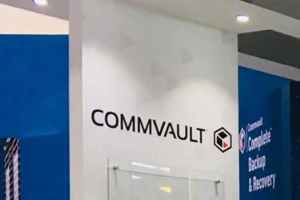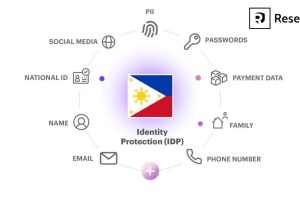Vikas Bakshi, Sr VP, Cloud4c outlines the cloud strategy as the pandemic has accelerated cloud adoption by enterprises.
What are the Solutions and services in the Cloud4C portfolio?
Cloud4C has been existing for almost 9 years. Our system consists of controllers. The primary focus is on data centers from a controller’s perspective. Cloud4C, as an organization, started off being a service provider to SAP. There was a lot of SAP workload on the cloud and we started successfully working on various platforms to support them and provide services to them as a bridge.
We extended our presence to 25 countries, 52 locations to support the initiatives across countries. Last 3 years, we started focusing on a lot of public cloud workforce, where we started seeing a lot of skillsets and traction beyond SAP that we started utilizing our self. Looking at workload, which makes sense to a lot of public cloud providers, we also worked heavily on the government cloud, community cloud and on structures that we call “bank in the box” which is cloud for the banking sector. Around 80% of the banks leverage our solutions around that.
As an organization we are around $290 million by the end of this year. Cloud4C alone should be around gathering $130 millions of cloud services revenue purely focused on cloud services and what we do on the cloud.
With enterprises moving towards a multi cloud environment, what are the challenges for the CIOs in managing this environment?
With the current scenario in the last 6-7 months there was a flux in cloud computing for a lot of customers, especially the ones who did not take a complete cloud journey, or those who decided to take the journey in the next couple of years down the line. The decisions got pre-poned as they did not have the resources, especially for on-premise solutions. So, a lot of on- premises solutions struggled and, critical applications we were working on suffered. This is where Cloud4C came in to help them on a consultative journey and roadmap because we, as an organization, have a complete understanding of the landscape for our customer and consult them to where should we land those. Then we can take them on a journey of migration on hybrid cloud or public cloud.
Lot of critical workloads and SAP from manufacturing sector started coming in, with conversation of how can I take the journey on cloud, which cloud to take, how to take the journey. These were the questions we were helping them with. Customers look at us to consult, migrate and what modernization can be done. These are the skillsets we bring on the table and help the customer. Acting as the good consultant for the CIOs is very important in this time because there is an urgency, and reliability, in terms of who should I go and where should I go, that’s where we are seeing a lot of traction in cloud journey.
What are the more popular or commonly adopted of these managed services by the enterprises?
The common thing is compute and storage but I also spoke about SAP. We are seeing a lot of SAP because we have a lot of focus on manufacturing and retail and many customers coming with those specific workloads. We are also seeing a lot of queries coming that are security related, especially about what you can do for cloud security for the movement into cloud. A lot of VDI conversation have opened in terms of remote working, people working from wherever, and the kind of security system being put in place. These are the common workloads that the customers are interested in.
What are the risks involved in shadow IT practices being followed by enterprises?
What we are trying to do is very strategic in nature, and in terms of what we are trying to achieve, and we have taken small steps towards hitting a million dollars. Specific things and specific workload, specific solutions like banking solutions, SAP modernization, hybrid cloud with AWS Outposts coming in. When it comes to shadow IT, the kind of workloads the customers doing a lot of things are more pertinent than the departments that they are looking at and infrastructure to run the show as they do not probably trust the entire IT infrastructure. What we are trying to do is look at how we can provide you with short term environment for doing some of those development activities, research activities, and providing a sensitive a workload which requires secure environment to do that.
Who are some of your marquee customers and what are some of your expansion plans?
A lot of SAP on AWS has happened with us, a lot of compute ion storage on AWS has happened with us, and a couple of thing with AWS IoT services has happened with us. We have seen the first AWS Outposts deals getting signed recently. There is an ISV we are working with in Saudi Arabia and there are also a couple of ISVs we are working closely with in India. We are trying to put up hybrid cloud for example we are working with a large energy utility company who wants to have a complete app modernization with a complete hybrid cloud setup at their rig and look at the various workloads, customize application that is there and how we can help the organization manage it and also secure the systems. Also, customers want the skillset of how to automate the process and execution process to scale up, so these are some of the workloads we are talking about.
Talking about geographic expansion we started from India and now working in some parts of Saudi Arabia, UAE. We are expanding into almost 15 countries in the Middle East, and Africa. We have made a lot of investments in Indonesia, Philippines, Taiwan, Malaysia, Thailand, Hong Kong and Vietnam. It gives us a lot of credibility of what we can do from a public cloud or a hybrid cloud perspective. The approach is different in markets like Canada which is one of the most mature markets. Looking at what kind of segment makes sense to go in Canada, Latin America, the Middle East and India and looking at the local people and what work load they are really talking about and customize their effort in terms of building that partnership using that environment.
How does Cloud4c help your enterprise customers on the security front?
We, as an organization, started off helping the government sector, banking sector, and SAP. We have adhered to certain compliance in every country. We have taken care of all the regulatory compliance. On top of that we have the SOC service that is very strong, and that is one of the reasons why lot of customers come to us. A lot of our security operations are moving to provide AI sectors, DevOps sectors, especially to the AI and automation that we are talking about. We have automated the whole security in different platforms of security the customer looks at.
Looking at the industry and what kind of regulatory framework that is required to deliver those things, some of our partners are coming to us because of this particular skillset because to them this is one element that takes their cost element much higher. I can tell you this that we are very agile and cost effective in deliverance of this services to our customer. When the concerns came in from the customers that is one of the things that we look forward to our customers – our expertise and skillset on security.
How did the changing pattern of workloads impact the existing SLAs?
We can talk about it in two ways. One is how it impacted the SLAs that were there because there was certain workloads those expanded when the SLAs were delivered. We have also seen customers who have been impacted financially to execute what they were doing in terms of running their business and here we as an organization make the call to support enterprises in dire situation. We even went on to give big discounts on workloads to those customers. So we made those investments as an organization to support in the difficult situations they have been in. It is about understanding how some of the customers have been impacted and taking their hands and supporting them and help them evolve so that they can still stay in business.
What are going to be the key focus areas for Cloud4c in the next few months?
There are 4 or 5 charters that we have taken up very strongly for the next 6 months to 1 year. One thing that we are taking forward with AWS is SAP modernization on AWS. We see a massive amount of customers are coming in for SAP modernization on AWS, that is one strong theme we are working on. We have identified what kind of workload makes sense, what kind of customer should we go after, and what kind of solutions we need to integrate.
The second thing that we are looking forward to is building a lot of analytical solutions, using AWS analytics. We have lot of banking customers as well who are looking at data and data analytics solutions to be provided and we are working on a solution by which we can take our customers who are in a private cloud to deliver analytics on AWS cloud.
The third element that we are conscious about and think can be a really big update is on the AWS Outposts, whether it is the enterprise sector, banking sector, large enterprises who are very sensitive about application of remote location or the public sector that’s the third optic that we see as a huge transformation whether it is VR, ISP solutions that needs to be provided very close to where the customer is.
The fourth one is a data centre exit, helping customers to do more than they are doing today in their existing environment or a private environment. What we have done is we share it with all our
sales leaders, and focus on ado a half-day or a full-day workshop along with AWS team members to understand the landscape what are the concerns, challenges how to make the transformation.
What will be your message for both customers and partners?
To our customers, both we and AWS are looking forward to supporting you on your transformation endeavors. We have the needed skillsets from a cloud perspective, the kind of workload agility and skill AWS has shown in the last few decades across the globe and also in India as well. We are here to support you on this endeavor together.
To our partners, there is a strategic initiative we can work together in terms of integrating solutions together in the market because that adds a lot of value not only to our partners, but also what we can deliver to our end customers. The Co-operative banks for example are going to take a huge journey on cloudification because of the RBI guidelines that are implemented. I see a huge scope to provide an agile, cost-effective solutions to those set of customers. It is a question of how we can collaborate in those areas with our partners. We are more than happy to come and discuss and see what we can do. We are looking forward to seeing how we can create that value that can give terrific sales to our customers.






















